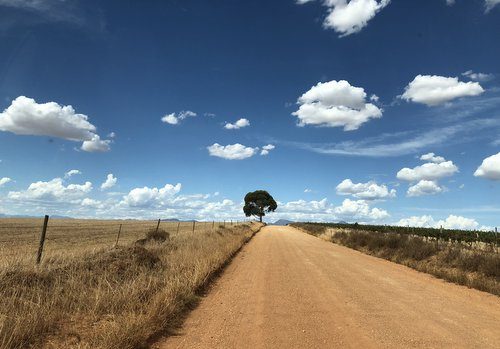
The producers working in the Gabrielskloof cellar in Botriver – Peter-Allan Finlayson, Marelise Niemann and John Seccombe – all buy grapes from growers spread across the various Cape wine regions. This means that there’s quite a bit of driving around during vintage time. You need to go to the vineyards to decide when to pick, and then to drop off the kissies (the small plastic crates that the grapes are picked into) and collect them when they’ve been filled with grapes.
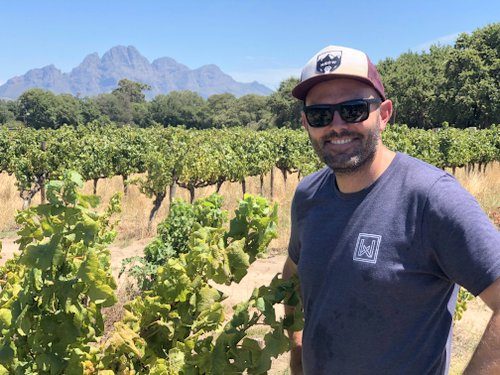
I’ve been on a couple of journeys to collect grapes. I spent the best part of a day with John Seccombe in a trip out to the Swartland in the hired Isuzu lorry that he shares with Marelise. We went via Franschhoek where we had a look at a Semillon vineyard that he sources from. It’s typical Franschhoek terroir with very sandy soils, and true to the region it was baking hot.
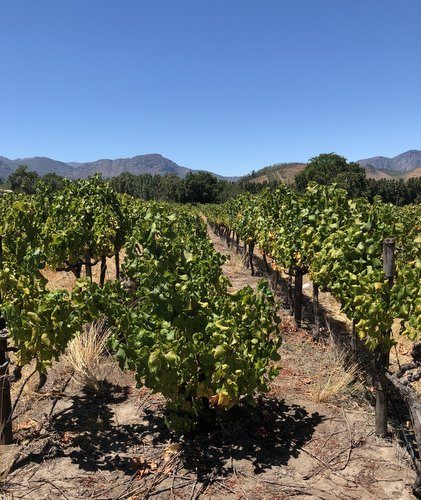
Interestingly, the grower has planted bush vines in every other row to increase the density.
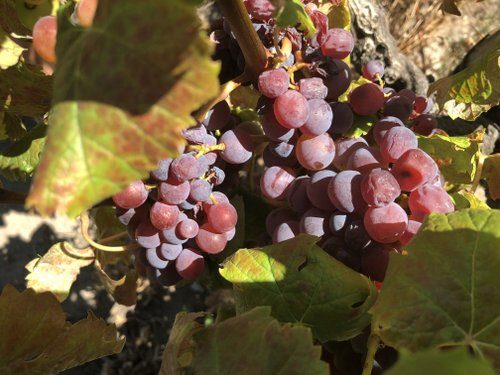
There’s some pink Semillon in the vineyard, too. The grapes are looking pretty good considering the drought, but yields are a bit down. John will pick these grapes in a few days.

As the observant will have noticed, there’s a lot of leaf roll virus in this vineyard. In white vineyards you don’t see the give-away colours that leaves of virused red varieties develop late in the season. The fruit here is really good, despite the virus: it seems to affect red grapes (which often need longer maturation) more than it does whites.
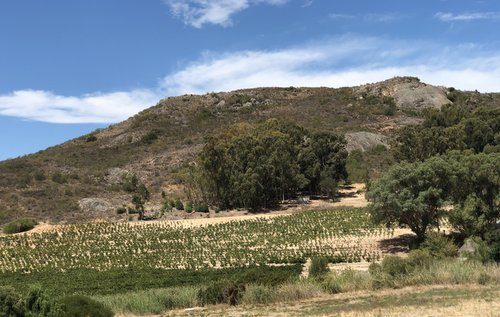
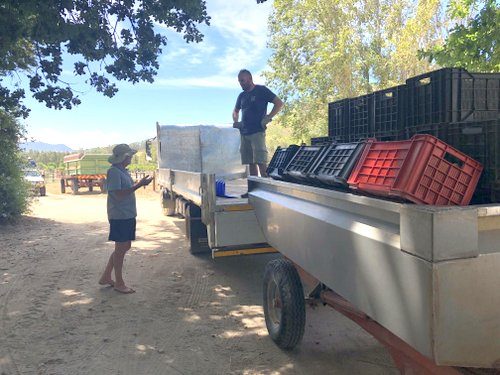
We then headed over to the Swartland, to collect grapes from a Paardeberg vineyard (it’s the farm owned by Franziska Wickens called Kweperfontein). These were in really good condition: the grower had access to water and was able to irrigate a bit. Some dry-grown vineyards in this region have been hit really hard by the drought, but it is far from a disastrous vintage. There will be some very good wines made this year, just fewer of them.
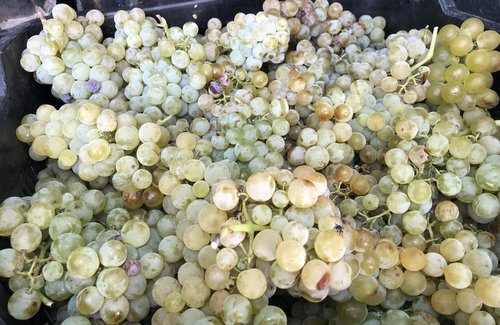
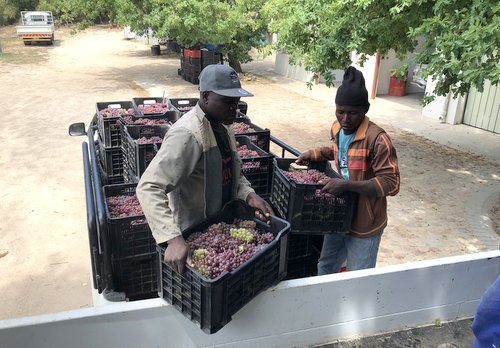

This is Semillon Gris, also known as pink Semillon. It will be used to make a white wine.
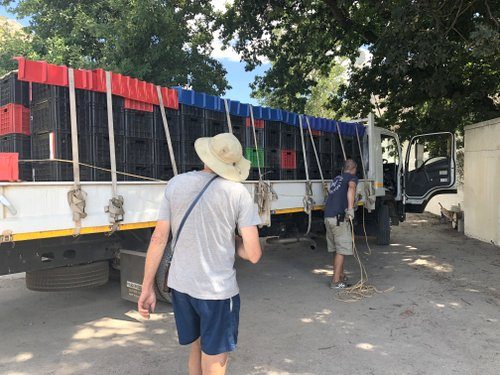
Making sure the kissies full of grapes are tied on well for the journey home. On the way back (it took 3 hours) we had to rush to beat the rain storms that were following us. When we got back we unloaded in record short time, and just got it all off before the rain started in earnest.
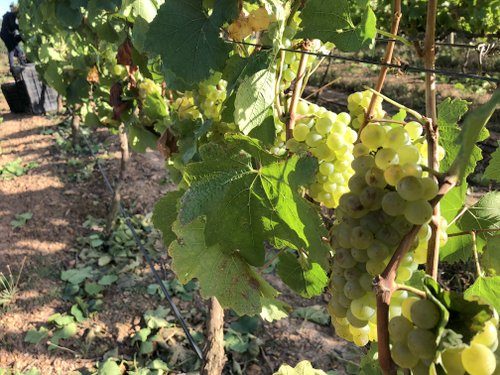
The next trip was to Elgin, a much shorter journey. I went with intern Paolo and a trailer to collect four tons of Chardonnay from Charles Fox. This is the first time Peter-Allan has taken Elgin Chardonnay, which is in high demand these days. The grapes looked and tasted beautiful, with nice acid and flavour.

Once again, these were packed in kissies. The alternative is to use half-ton bins, but the grapes would need to be processed as soon as they got back to the winery because the bunches at the bottom would be crushed by the weight of the grapes above. The benefit of kissies is that they keep the fruit in optimum condition, and you can put them in a cold room for a day or two before processing. They are just a lot of work to move around and then clean after use.
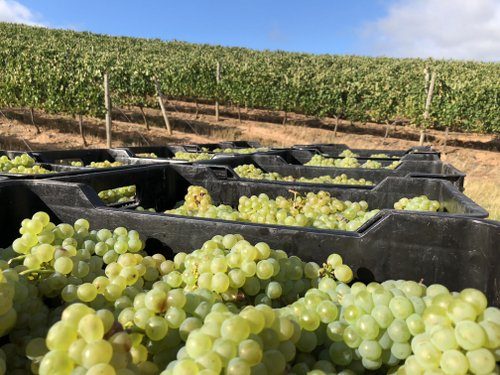
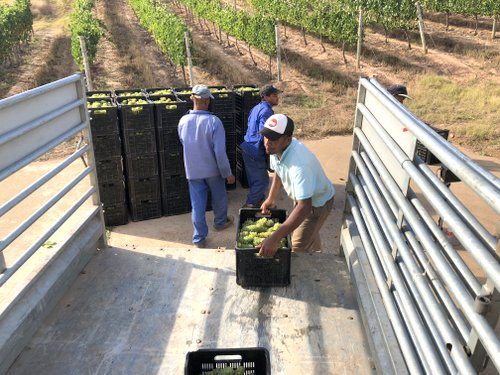
Loading the trailer. These were filled high: many were over 20 kg. Normally you’d expect 18 kg each.
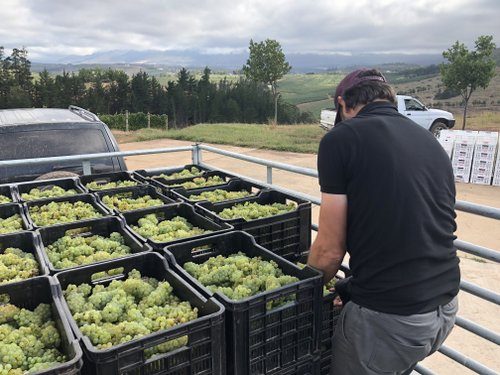
Paolo putting the kissies in place. The trailer was full, four high. Don’t want to spill this load!
Harvest at Gabrielskloof:
- Managing red wine ferments
- Vineyard sampling
- Collecting grapes
- Pressing Chenin Blanc and sorting Pinot Noir
- Pressing Grenache Gris and barrel work
- The final instalment
3 Comments on Harvest at Gabrielskloof: collecting grapes
Never heard of “Pink Semillon” – a local mutation or something found across the world? What kind of white wine style would they hope to make from it?
Jamie, thanks for a great look at Harvest time in SA. I have a growing interest in SA wines and this was informative to me.
Andrew, see this from elsewhere on Jamie’s blog. The grape is known as Semillon Gris and is a natural mutation that sometimes occurs as Semillon vines age, particularly in South Africa.
http://www.wineanorak.com/wineblog/semillon/the-mullineux-semillon-gris